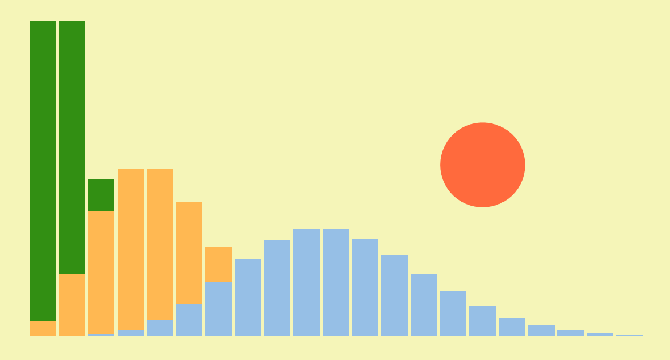Towards Data Science
4w
389

Image Credit: Towards Data Science
Mastering the Poisson Distribution: Intuition and Foundations
- The Poisson distribution is explored due to its relevance in scenarios involving binary choices that aggregate into counts, such as the behaviors in online marketplaces.
- A concrete example of a seller listing items on a platform is used to illustrate the workings of the Poisson process.
- The rate parameter (λ) in the Poisson distribution represents the average monthly listings, serving as both the expected value and variance.
- Compared to other distributions like the Normal distribution, the Poisson distribution only requires one parameter, simplifying parametric inference.
- The formula for the Poisson distribution's probability mass function (PMF) is defined, showing the relationship between observed count (k) and rate parameter (λ).
- The integration of λᵏ, e^-λ, and k! in the Poisson distribution formula is explained, highlighting the correction for overcounting due to interchangeable events.
- The Poisson process and Poisson distribution are distinguished, with the former being a continuous-time model of events occurring in intervals, while the latter describes probabilities for counts in an interval.
- Extensions of the Poisson distribution are discussed, such as allowing the rate parameter to vary over time to accommodate changing intensities or heterogeneity among multiple processes.
- The Negative Binomial distribution is introduced as a solution for overdispersion and heterogeneity in scenarios where the constant rate assumption of the Poisson distribution does not hold.
- Increased flexibility in distribution modeling comes with challenges in parameter estimation and potential overfitting, impacting statistical power in inference.
- While the Poisson distribution is useful for count data, it is essential to assess model assumptions and consider simpler approaches or Bayesian methods to address limitations and maintain statistical power.
Read Full Article
22 Likes
For uninterrupted reading, download the app